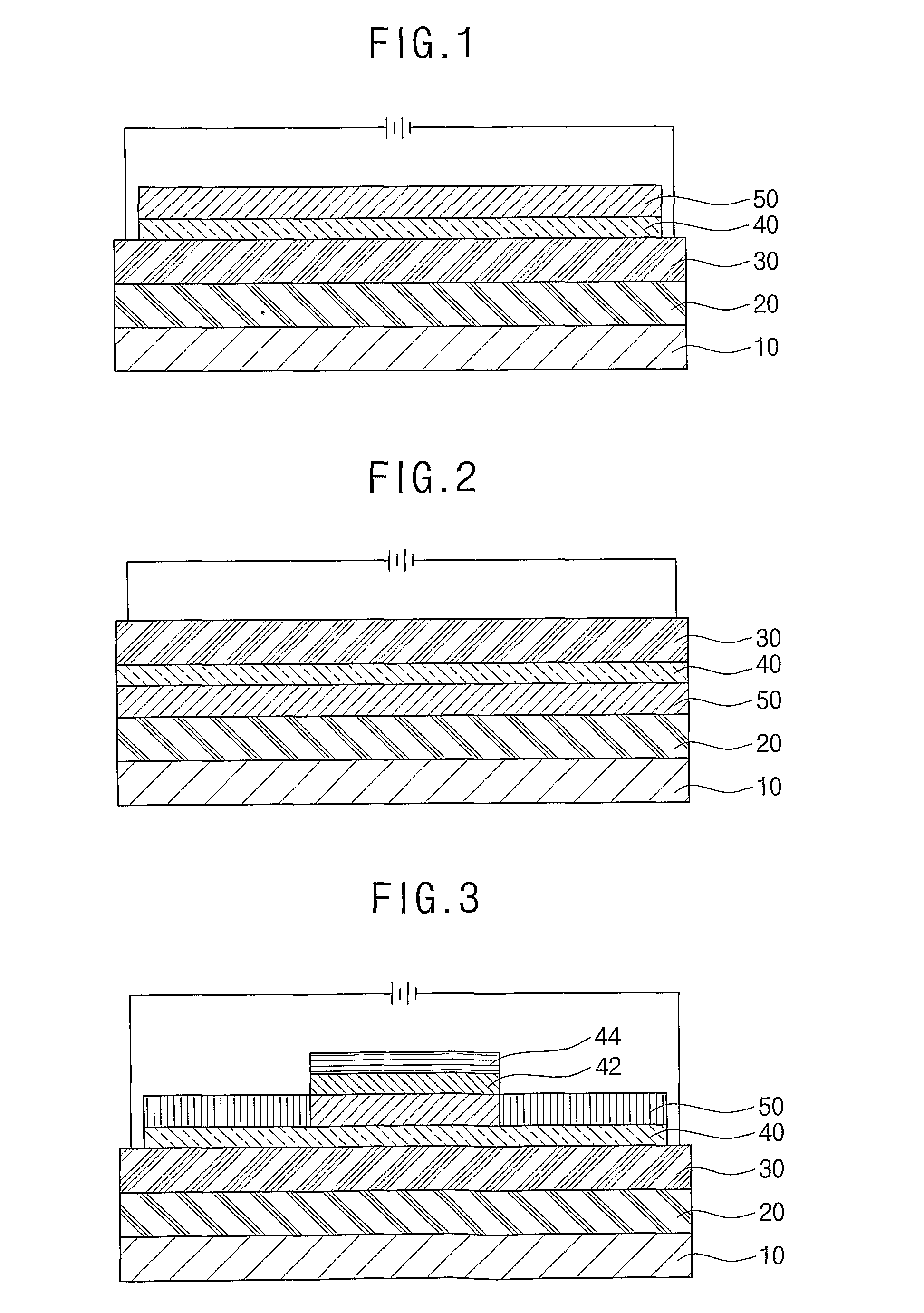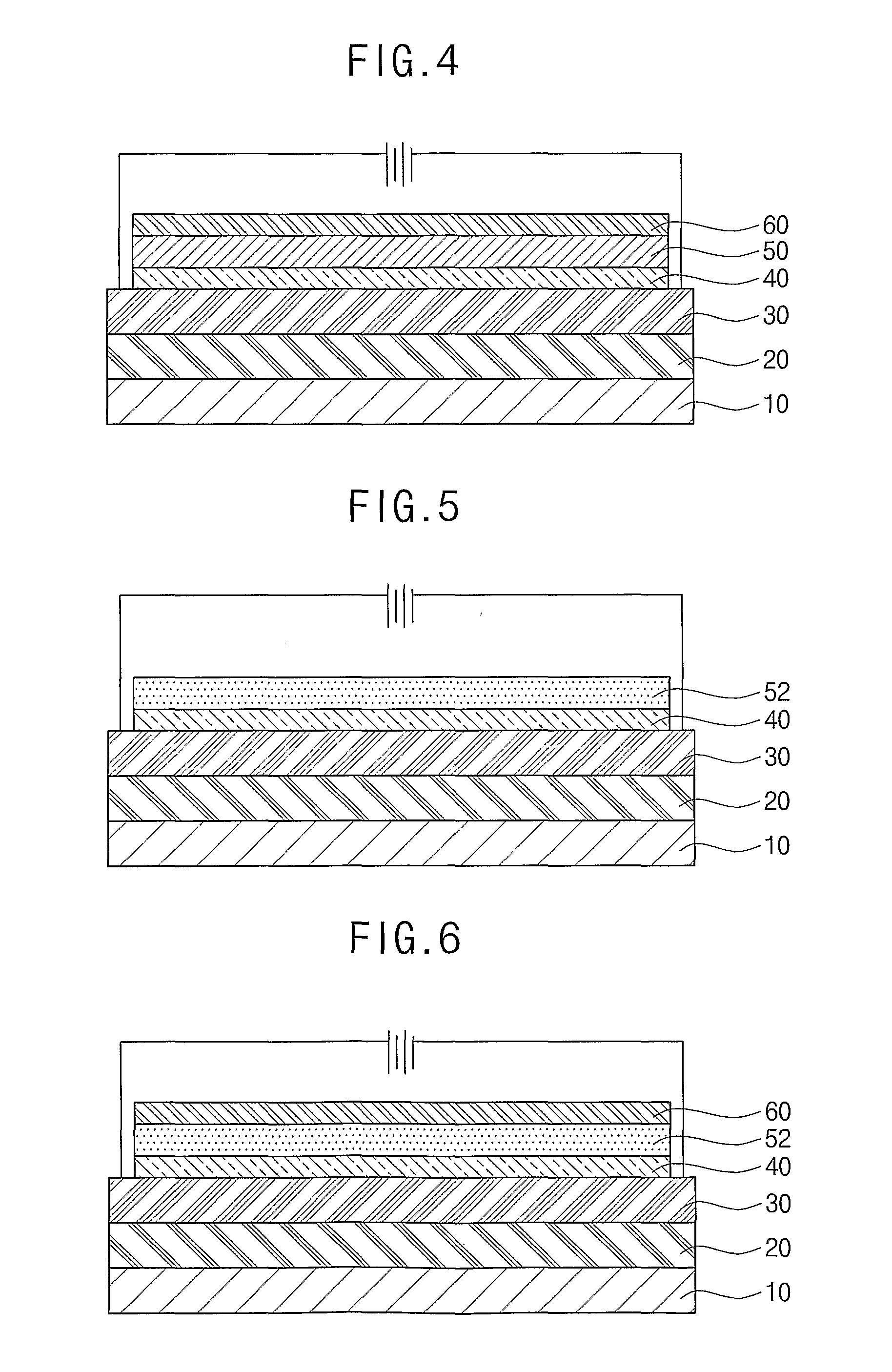Fabricating method of polycrystalline silicon thin film, polycrystalline silicon thin film fabricated using the same
a technology of polycrystalline silicon and thin film, which is applied in the direction of semiconductor devices, electrical devices, transistors, etc., can solve the problems of low aperture ratio, low mobility of electrons functioning as charge carriers, and inability to meet the requirements of cmos processes, and achieve excellent crystallinity and reduce processing time
- Summary
- Abstract
- Description
- Claims
- Application Information
AI Technical Summary
Benefits of technology
Problems solved by technology
Method used
Image
Examples
example 1
[0062]A 3000 Å SiO2 layer (a first insulating layer) was formed on a glass substrate with a size of 2 cm (L)×2 cm (W)×0.7 mm (H) by PECVD. A 1000 Å molybdenum (Mo) layer was deposited on the first insulating layer by sputtering, and a 1000 Å SiO2 layer (a second insulating layer) was then deposited by PECVD. A 500 Å a-Si thin film was deposited on the second insulating layer by PECVD, and thus a substrate including the a-Si thin film was completed as shown in FIG. 1. Here, the resistance of the Mo layer was 1.75Ω.
[0063]A voltage of 280V / cm was applied to the Mo layer of the sample described above for 300 μs. In the application of the electrical field, an energy content applied to the Mo layer was about 20000 Watt / cm2, and instantaneous temperature was increased to 1350° C.
example 2
[0064]A 3000 Å SiO2 layer (a first insulating layer) was formed on a glass substrate with a size of 2 cm (L)×2 cm (W)×0.7 mm (H) by PECVD. A 1000 Å titanium (Ti) layer was deposited on the first insulating layer by sputtering, and a 1,000 Å SiO2 layer (a second insulating layer) was then deposited by PECVD. A 500 Å a-Si thin film was deposited on the second insulating layer by PECVD, and thus a substrate including the a-Si thin film was completed as shown in FIG. 1. Here, the resistance of the Ti layer was 7.5Ω.
[0065]A voltage of 500V / cm was applied to the Ti layer of the sample described above for 300 μs. In the application of the electrical field, the energy content applied to the Ti layer was about 19000 Watt / cm2, and the instantaneous temperature was increased to 1300° C.
PUM
| Property | Measurement | Unit |
|---|---|---|
| melting point | aaaaa | aaaaa |
| temperature | aaaaa | aaaaa |
| temperature | aaaaa | aaaaa |
Abstract
Description
Claims
Application Information
 Login to View More
Login to View More - R&D
- Intellectual Property
- Life Sciences
- Materials
- Tech Scout
- Unparalleled Data Quality
- Higher Quality Content
- 60% Fewer Hallucinations
Browse by: Latest US Patents, China's latest patents, Technical Efficacy Thesaurus, Application Domain, Technology Topic, Popular Technical Reports.
© 2025 PatSnap. All rights reserved.Legal|Privacy policy|Modern Slavery Act Transparency Statement|Sitemap|About US| Contact US: help@patsnap.com



